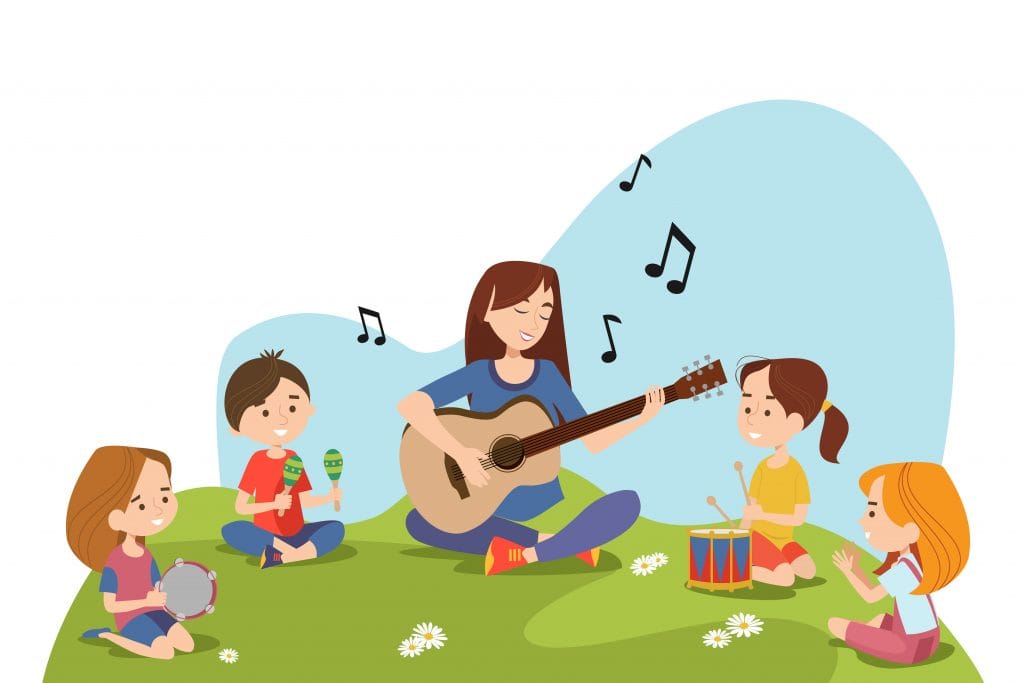Profesor: Predi Carmen
Școala Gimnazială „Constantin Gheorghiță” Podari

Teaching English with Rhythm and Rhyme: A Musical Approach to Language Learning
Abstract: Music is a powerful, multimodal tool that can enhance the teaching and learning of English. Beyond its entertainment value, music offers linguistic, emotional, and cultural benefits that make it a valuable resource in the English as a Second Language (ESL) or English as a Foreign Language (EFL) classroom. This article explores how music can be effectively integrated into English instruction to develop listening, speaking, vocabulary, and cultural competence.
Theoretical Foundations of Music Integration in Language Education
In recent years, educators have increasingly recognized the pedagogical potential of music in language learning. Songs, rhythms, and lyrics engage learners emotionally and cognitively, creating memorable and enjoyable experiences. Music can expose students to authentic language, promote motivation, and foster better retention of vocabulary and structures. According to researchers such as Murphey (1992), music is not only motivational but also serves as a language model that supports pronunciation and prosody.
Linguistic Development through Musical Input
Music supports the development of all four language skills: listening, speaking, reading, and writing. Lyrics introduce idiomatic expressions, phrasal verbs, and slang in a context that is easier to grasp and remember. Repetitive structures in songs reinforce grammar patterns, while melody aids in memorization. For instance, using the Beatles’ “Let It Be” can help students practice the imperative mood and verb forms, while songs like “If I Were a Boy” by Beyoncé offer practice with conditionals and subjunctive mood. Rhymes and rhythm also enhance pronunciation and intonation, especially when learners sing along or participate in rhythmic activities like clapping or chanting.
Cultural Awareness and Affective Engagement Facilitated by Music
Songs often reflect cultural values, historical contexts, and social issues, making them useful tools for intercultural awareness. Through music, learners can explore holidays, traditions, and worldviews of English-speaking countries. For example, folk songs, protest music, or national anthems can open discussions about politics, identity, and heritage. Emotionally, music lowers the affective filter—a concept proposed by Krashen (1982)—creating a relaxed environment conducive to language acquisition. Learners who enjoy the material are more likely to participate and retain what they learn.
Pedagogical Applications: Music-Based Activities in the English Language Classroom
Listening and Comprehension: Teachers can use gap-fill exercises where learners listen to a song and fill in missing lyrics. This improves listening comprehension and attention to detail.
Vocabulary Building: Highlighting specific words or expressions from songs can lead to thematic vocabulary lessons. Learners might create flashcards or illustrate meanings using song contexts.
Speaking and Pronunciation: Singing karaoke or reciting lyrics aloud helps learners practice pronunciation, stress patterns, and connected speech.
Creative Writing: Students can write alternative lyrics, summaries, or narratives inspired by the themes of a song.
Discussion and Debate: Songs that touch on social or emotional themes can be springboards for class discussions or debates. For instance, John Lennon’s “Imagine” invites philosophical reflection and opinion sharing.
Limitations, Ethical Considerations, and Best Practices
While music is a versatile tool, it must be chosen carefully. Teachers should ensure that lyrics are appropriate for the learners’ age and cultural background. Additionally, it is important to balance musical activities with language objectives. Overemphasis on entertainment can detract from educational goals. Teachers should also be mindful of copyright regulations when using commercial music. However, many artists and platforms provide classroom-friendly versions or copyright-cleared songs.
Concluding Reflections on the Pedagogical Value of Music in English Language Teaching
Music is not merely an optional supplement but a rich and dynamic resource in the English language classroom. When used thoughtfully, it can enhance linguistic competence, cultural understanding, and learner motivation. With its ability to bridge emotional and cognitive domains, music can transform the English learning experience into a more engaging and holistic process.
References
- Krashen, S. (1982). *Principles and practice in second language acquisition*. Pergamon Press.
- Murphey, T. (1992). *Music and song*. Oxford University Press.
- Medina, S. L. (1993). *The effect of music on second language vocabulary acquisition*. National Network for Early Language Learning.
- Lynch, L. (2005). *Using music to promote language learning*. The Internet TESL Journal, 11(12).
✉Despre noi: eParadigme.ro este o publicație online independentă, apolitică și echidistantă, dedicată jurnalismului independent, analizelor critice și promovării gândirii libere. Credem în transparență, responsabilitate publică și libertatea de exprimare.
🔍 Acceptăm documente, declarații și mărturii în mod confidențial, cu respectarea legii și a eticii jurnalistice. Putem iniția anchete jurnalistice, dacă subiectul este relevant și documentat.
✍Dacă vrei să contribui cu un articol, o anchetă, un eseu sau o lucrare de cercetare, te invităm să ni te alături.
📚 Prin editura proprie, sprijinim autorii independenți și publicarea gratuită de cărți și articole online.
